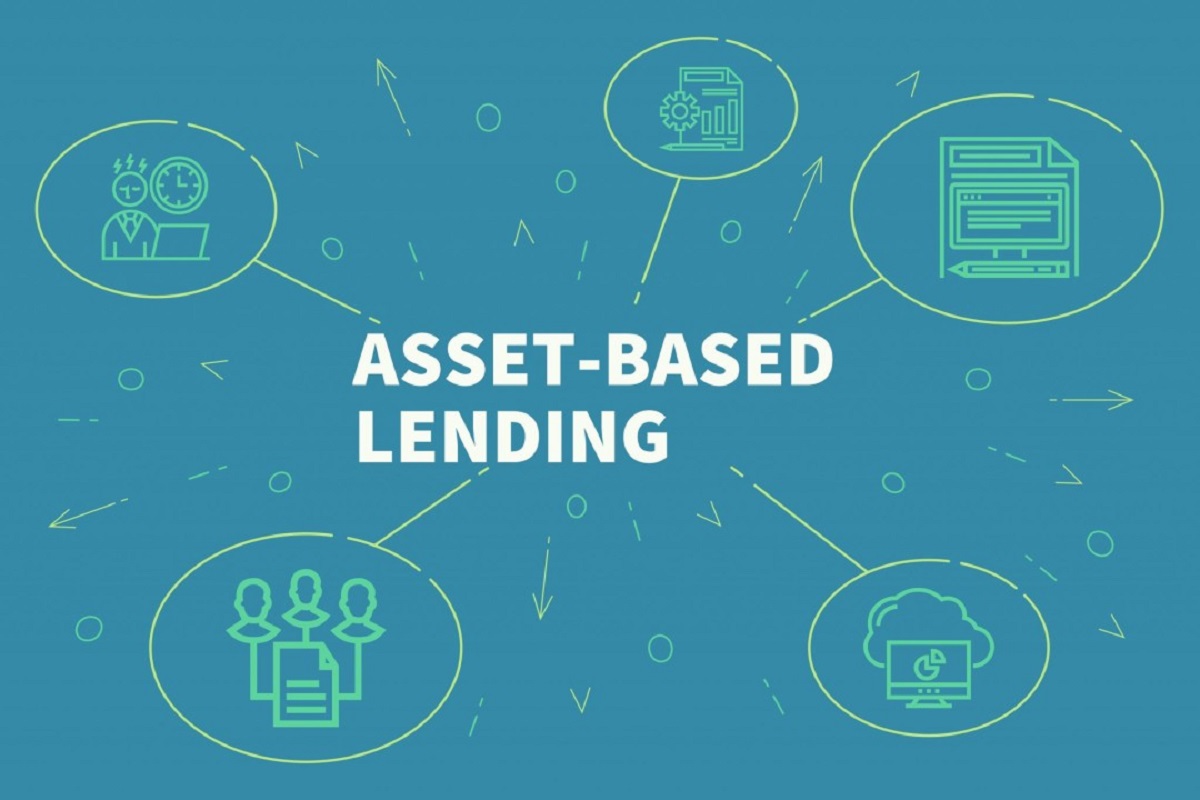What Is Collateralized Lending?
Collateralized lending, also known as secured lending, is a financing method where a borrower pledges an asset as collateral to secure a loan. The collateral serves as a form of protection for the lender in case the borrower defaults on their loan payments. This type of lending is commonly used by financial institutions and individuals alike to mitigate the risk associated with lending money.
Collateral can take various forms, such as real estate, vehicles, stocks, or other valuable possessions. The value of the collateral determines the amount of money that can be borrowed. In the event of default, the lender can legally seize and sell the collateral to recover the outstanding debt.
The objective of collateralized lending is to provide lenders with a level of assurance that they will recoup their funds even if the borrower fails to repay the loan. This security allows lenders to offer more favorable terms, such as lower interest rates or higher loan amounts, compared to unsecured loans.
As a borrower, collateralized lending offers several benefits. Firstly, it increases the likelihood of loan approval, especially for individuals with lower credit scores or limited credit history. The presence of collateral helps to offset the lender’s risk, providing them with greater confidence in extending credit.
Additionally, collateralized lending can provide borrowers with access to higher loan limits. By pledging valuable assets as collateral, individuals can secure larger loan amounts than they might be eligible for with unsecured loans.
However, it is important to note that collateralized loans come with certain risks and considerations. Borrowers run the risk of losing their collateral if they default on their loan payments. It is crucial to carefully assess one’s ability to meet the loan obligations to avoid potential asset forfeiture.
In summary, collateralized lending is a financing method that involves pledging an asset as collateral to secure a loan. It provides lenders with added security and allows borrowers to access funds that they may not qualify for with unsecured loans. Nevertheless, borrowers must exercise caution and ensure they can meet their repayment obligations to avoid potential loss of collateral.
How Does Collateralized Lending Work?
Collateralized lending operates on the principle of using assets as collateral to secure a loan. The process involves the following steps:
- Loan Application: The borrower submits a loan application to the lender, detailing the desired loan amount, purpose, and repayment terms.
- Collateral Evaluation: Once the loan application is received, the lender assesses the value and condition of the proposed collateral. This evaluation helps determine the loan-to-value ratio, which influences the loan amount that can be offered.
- Loan Approval: If the lender determines that the collateral meets their criteria and the borrower’s creditworthiness is satisfactory, they approve the loan. The terms and conditions of the loan are communicated to the borrower, including the interest rate, repayment schedule, and any associated fees.
- Collateral Pledge: The borrower officially pledges the collateral to the lender. This may involve signing legal documents and transferring ownership or control of the asset to the lender until the loan is repaid.
- Funds Disbursement: Once the collateral pledge is complete, the lender disburses the approved loan amount to the borrower. This can be in the form of a lump sum or in installments, depending on the agreed-upon terms.
- Loan Repayment: The borrower is responsible for repaying the loan according to the agreed-upon terms. This typically includes periodic payments of principal and interest over a specified period. Failure to make timely payments can result in default, leading to potential loss of the pledged collateral.
- Asset Seizure or Release: In the event of default, the lender has the legal right to seize and sell the pledged collateral to recover the outstanding debt. Once the debt is settled, any remaining funds are returned to the borrower. If the loan is repaid in full, the lender releases the collateral back to the borrower.
It is important to note that different lenders may have specific requirements and processes for collateralized lending. Therefore, borrowers should carefully review and understand the terms and conditions before proceeding with a collateralized loan.
Benefits of Collateralized Lending
Collateralized lending offers several benefits for both lenders and borrowers. Let’s explore some of the key advantages:
- Increased Loan Approval: Collateralized lending increases the likelihood of loan approval for borrowers with lower credit scores or limited credit history. By pledging an asset as collateral, borrowers mitigate the risk for lenders, making them more willing to extend credit.
- Lower Interest Rates: Secured loans typically come with lower interest rates compared to unsecured loans. Lenders are more inclined to offer competitive rates when they have the assurance of collateral. This translates to significant savings over the life of the loan.
- Access to Higher Loan Amounts: Collateral allows borrowers to secure higher loan amounts than they might be eligible for with unsecured loans. The value of the collateral directly influences the loan-to-value ratio, allowing individuals to tap into the equity of their assets and access larger sums of money.
- Flexible Repayment Terms: Collateralized loans often offer more flexible repayment terms. Borrowers can negotiate longer repayment periods, spreading out the payments over a manageable timeframe. This can help reduce the strain on the borrower’s monthly budget.
- Improved Credit Opportunities: Successfully repaying a collateralized loan can have a positive impact on a borrower’s credit history. Timely payments and responsible debt management can enhance credit scores and open up future credit opportunities with more favorable terms.
For lenders, collateralized lending reduces the risk associated with lending money. The presence of collateral provides a safety net in case of default, allowing lenders to recover their funds by selling the pledged assets. This mitigates their financial risk and provides a sense of security when extending credit.
Overall, collateralized lending offers advantages to both borrowers and lenders. Borrowers gain access to funds they may not otherwise qualify for, at lower interest rates, with the flexibility to repay over a longer period. Lenders benefit from reduced risk and the potential to recover their funds through the sale of collateral. It is important, however, for borrowers to fully understand the terms and risks associated with collateralized loans before committing to them.
Risks and Considerations of Collateralized Lending
While collateralized lending offers numerous benefits, there are risks and considerations that borrowers should be aware of before opting for this type of financing:
- Potential Loss of Collateral: The primary risk associated with collateralized lending is the potential loss of the pledged asset. If a borrower fails to make timely loan payments, the lender has the legal right to seize and sell the collateral to recover the outstanding debt. It is essential for borrowers to assess their ability to meet loan obligations to avoid the risk of losing their valuable assets.
- Valuation and LTV Ratio: The appraisal and valuation of collateral play a significant role in determining the loan-to-value (LTV) ratio. If the collateral’s value is overestimated, borrowers may be granted excessive loan amounts, leading to a higher risk of default. Conversely, undervalued collateral may result in borrowers receiving lower loan amounts than desired.
- Interest Rates and Fees: Although collateralized loans generally offer lower interest rates than unsecured loans, borrowers should carefully review the terms and conditions. Lenders may impose additional fees, such as appraisal fees, origination fees, or administrative charges, which can impact the overall cost of the loan.
- Potential for Negative Equity: If the value of the collateral decreases significantly during the loan term, borrowers may find themselves in a situation of negative equity. This means that the outstanding loan balance exceeds the value of the collateral. In such cases, borrowers may face challenges refinancing or selling the asset to settle the debt.
- Credit Score Impact: Like any loan, collateralized lending impacts a borrower’s credit score. Late or missed payments can have a negative effect on creditworthiness, potentially impacting future borrowing opportunities. It is crucial for borrowers to honor their repayment obligations to maintain a positive credit history.
Before opting for a collateralized loan, borrowers should carefully consider their financial situation, ability to repay the loan, and the potential risks involved. It can be beneficial to explore alternative financing options, conduct thorough research, and consult with financial professionals to make informed decisions.
By understanding and taking these risks and considerations into account, borrowers can ensure that collateralized lending aligns with their financial goals and that they can responsibly manage their loan obligations without jeopardizing their valuable assets.
Common Types of Collateral Used in Collateralized Lending
Collateralized lending involves the use of various assets as collateral to secure loans. Here are some common types of collateral that lenders accept:
- Real Estate: Residential or commercial properties are frequently used as collateral. The value of the property and its equity play a crucial role in determining the loan amount. Lenders may require property appraisals and legal documentation to ensure the property is free of encumbrances.
- Vehicles: Cars, trucks, motorcycles, boats, and other vehicles can be used as collateral. Lenders consider the market value, condition, and ownership documentation before accepting them as collateral. The vehicle’s title may need to be transferred to the lender until the loan is fully repaid.
- Financial Assets: Securities such as stocks, bonds, mutual funds, and certificates of deposit can be used as collateral. These assets are assessed based on their market value, liquidity, and potential risks. Lenders may require control over these assets during the loan period.
- Jewelry and Precious Metals: Valuable jewelry, gemstones, gold, silver, and other precious metals can serve as collateral. Lenders consider factors such as quality, market demand, and appraisal reports when evaluating these assets.
- Business Assets: Business owners may pledge business assets, such as equipment, inventory, accounts receivable, or commercial property, as collateral for loans. These assets need to be properly documented and valued to be accepted as collateral.
- Insurance Policies: Life insurance policies with accumulated cash value can be used as collateral. Lenders assess the policy’s surrender value and consider factors like the policyholder’s age, health, and premium payment history.
- Personal Assets: Personal possessions, such as valuable artwork, collectibles, antiques, or high-end electronics, can be offered as collateral. Lenders evaluate the market value, condition, and demand for these items before accepting them.
It is important to note that the type of collateral accepted may vary depending on the lender’s policies and the nature of the loan. Some lenders may specialize in specific types of collateral, while others may have restrictions on certain assets.
Borrowers should carefully consider the value, liquidity, and sentimental significance of their assets before pledging them as collateral. It is advisable to consult with a financial advisor or lender to determine the most suitable collateral option based on individual circumstances and loan requirements.
How to Obtain Collateralized Loans
If you are considering obtaining a collateralized loan, here are the general steps involved in the process:
- Evaluate Your Finances: Assess your financial situation and determine how much money you need and what assets you can use as collateral. Consider factors such as your credit score, income stability, and existing debt obligations.
- Research Lenders: Research and compare lenders that offer collateralized loans. Look for established financial institutions or online lenders with a positive reputation and favorable terms. Consider factors such as interest rates, loan amounts, repayment terms, and fees.
- Prepare Documentation: Gather the necessary documentation, such as identification, proof of income, asset ownership, and any additional documents required by the lender. This may include appraisal reports, property deeds, vehicle titles, or insurance policies.
- Submit Loan Application: Submit the loan application to the chosen lender. Provide accurate and complete information about your financial situation and the collateral you plan to use. Be prepared to answer any additional questions or provide further documentation if requested.
- Collateral Evaluation: Once the loan application is received, the lender will assess the value and condition of the proposed collateral. They may conduct independent appraisals or perform a thorough evaluation to determine its eligibility and loan-to-value ratio.
- Loan Approval: If the lender determines that the collateral meets their requirements and you are creditworthy, they will approve your loan application. They will communicate the terms and conditions, including the interest rate, repayment schedule, and any associated fees.
- Pledge Collateral: After loan approval, you will need to pledge the collateral to the lender. This may involve signing legal documents, transferring ownership or control of the asset, or registering the collateral with the appropriate authorities, depending on the type of collateral.
- Receive Loan Funds: Once the collateral is pledged, the lender will disburse the approved loan amount to you. The funds will be deposited into your designated bank account or provided in another agreed-upon manner, such as a bank draft.
- Repay the Loan: Begin making timely repayments according to the terms of the loan agreement. Ensure that you understand the repayment schedule, including the due dates and amount of each installment. Set up a payment plan that suits your financial capabilities.
- Monitor Your Loan: Keep track of your loan balance and payment history. Stay in communication with the lender in case of any changes in your circumstances that may affect your ability to repay the loan on time.
It is important to note that the process and requirements may vary among lenders. It is recommended to carefully review the terms and conditions of the loan agreement before committing to a collateralized loan. Consulting with a financial advisor or loan officer can also provide valuable guidance throughout the process.
Examples of Collateralized Lending in Practice
Collateralized lending is a common practice in various financial sectors. Here are a few examples of how collateralized lending is used in practice:
- Mortgages: Residential mortgages are perhaps the most well-known example of collateralized lending. In this case, the property being purchased serves as collateral. If the borrower defaults on their mortgage payments, the lender has the right to foreclose on the property and sell it to recover the outstanding debt.
- Auto Loans: When individuals purchase a car using financing, the vehicle itself serves as collateral. If the borrower fails to make the required loan payments, the lender can repossess the vehicle and sell it to recoup the remaining debt.
- Secured Personal Loans: Some individuals may opt for secured personal loans, where they pledge valuable assets such as jewelry, art, or high-end electronics as collateral. The lender uses the collateral to secure the loan, providing more favorable terms compared to unsecured personal loans.
- Business Loans: Small business owners may use collateralized lending to secure financing for their businesses. They may pledge business assets such as equipment, inventory, or receivables as collateral. If the business defaults on the loan, the lender can seize and sell the collateral to recover the debt.
- Margin Trading: In the context of securities trading, investors can use their investment portfolio as collateral to borrow funds for margin trading. The securities held in the portfolio serve as collateral, and if the margin call is not met, the broker can liquidate the assets to cover the debt.
- Asset-Based Loans: Companies can secure asset-based loans by pledging various assets as collateral, such as accounts receivable, inventory, or property. These assets are valued and monitored by the lender, who can seize and liquidate them in case of default.
These are just a few examples of how collateralized lending is applied in different scenarios. The specific terms, conditions, and requirements may vary depending on the type of loan and the lender’s policies. It is crucial for borrowers to fully understand the terms and risks associated with collateralized loans before entering into any agreement.
Conclusion
Collateralized lending is a financing method that offers borrowers the opportunity to secure loans by pledging valuable assets as collateral. By providing lenders with an additional layer of security, this type of lending increases the likelihood of loan approval, allows for lower interest rates, and provides access to higher loan amounts. However, borrowers must carefully consider the risks and considerations associated with collateralized loans, such as the potential loss of collateral and the impact on credit scores.
Common types of collateral used in collateralized lending include real estate, vehicles, financial assets, jewelry, business assets, insurance policies, and personal possessions. The specific type of collateral accepted may vary depending on the lender’s policies and the nature of the loan.
To obtain a collateralized loan, borrowers need to evaluate their finances, research lenders, gather necessary documentation, submit a loan application, undergo collateral evaluation, pledge the collateral, and receive the loan funds. Timely repayment is crucial to avoid potential loss of collateral and negative impacts on credit scores.
Collateralized lending is a widely utilized practice in various sectors, including mortgages, auto loans, personal loans, business loans, margin trading, and asset-based loans. It provides lenders with a level of protection and helps borrowers access financing that may otherwise be challenging to obtain.
Overall, collateralized lending can be a beneficial option for individuals and businesses in need of funds, but it should be approached with caution and careful consideration of the associated risks and responsibilities. By understanding the process, evaluating the available options, and managing repayments responsibly, borrowers can make informed decisions and navigate the world of collateralized lending effectively.

























